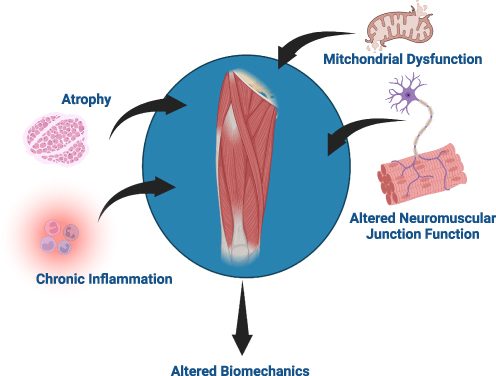Figures & data
Figure 1 Simplified depiction of COPD pathophysiology that leads to biomechanical alterations. Mitochondrial loss/dysfunction, increased circulating inflammatory cells, muscle atrophy, and alterations at the neuromuscular junction contribute to decreased muscle force, rate of force generation, and physical activity, as well as increased muscle fatigue and weakness. These factors, along with many others, contribute to altered biomechanics, decreased exercise capacity, increased physical inactivity, and exercise intolerance. Created with BioRender.com.

Table 1 Definitions of Biomechanical Terms
Figure 2 Typical biomechanical methods. (A and B) Motion capture represented by cameras systems in the background (solid red circle) record where markers are in space (dotted red circle) and provide information about where the person is in space (kinematics). (C) Force platforms provide information about forces (kinetics). (D) Dynamometers provide information regarding muscle strength and power.

Table 2 Studies of Balance in PwCOPD That Used Biomechanical Measures of Postural Sway
Table 3 Studies of Balance in PwCOPD Using Non-Biomechanical Tests
Table 4 Studies of Gait in PwCOPD
Table 5 Studies of Muscle Mechanics in PwCOPD
Table 6 Studies of Breathing Mechanics in PwCOPD
